The Net Zero country race is on!
Which countries and companies are leading the race to net zero?
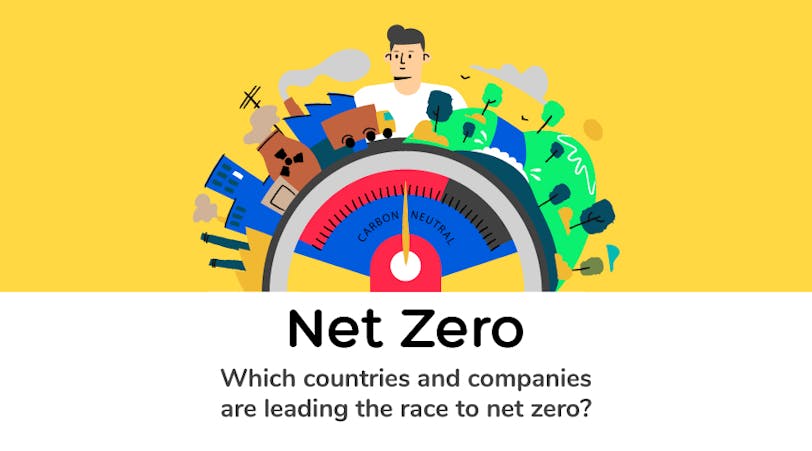
Climate scientists warn of the dangers of global warming and advocate the need to work towards net zero emissions.
To stabilise the effects of climate change, experts warn that CO2 emissions must be reduced to zero. The longer it takes to bring emissions to zero, the worse of an effect greenhouse gases will have on the planet.
Many are abandoning traditional internal combustion engine cars for electric vehicles, and installing a home charger, while others are pushing for private companies to set a goal for net zero emissions.
We wanted to find out which companies and countries have responded to the pleas of climate scientists by setting a goal for net zero emissions. We also looked into the GDP of each country and the revenue of each private company to reveal if this impacts commitments towards preventing climate change.
The countries leading the race to net zero
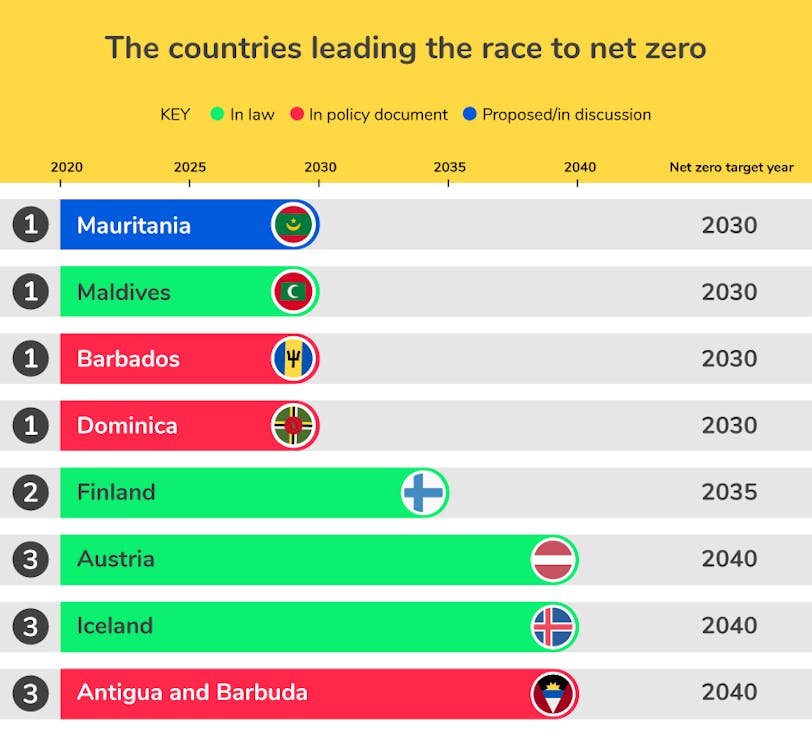
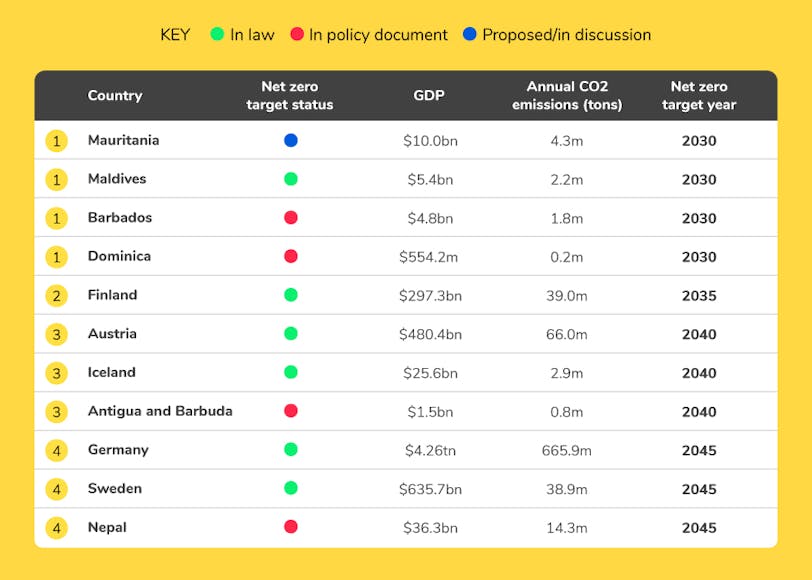
1. Maldives, Barbados, Dominica, Mauritania | Net zero target year: 2030
By 2030, the Maldives, Barbados, Dominica, and Mauritania aim to be completely net zero. This is sooner than any other country in the world. The Maldives has solidified its net zero targets in law, while Barbados and Dominica have pledged their targets in policy documents. Meanwhile, Mauritania’s target remains a proposal.
Notably, the countries with the soonest net zero target have among the lowest GDP out of all locations on our list. These countries are also among the lowest for CO2 emissions. Out of the four countries aiming to be net zero by 2030, Mauritania has the most emissions at approximately 4.3 million tons per year. Despite this, Mauritania’s annual emissions level is just a fraction of those of China, the top CO2 producer on our list, which is around 12.5 billion tons. With 2030 fast approaching, these countries are aiming to eliminate all CO2 emissions in the next seven years.
2. Finland | Net zero target year: 2035
Closely behind the top four, Finland aims to be net zero by 2035, with the target solidified into law.
With a GDP of $297.3 billion and annual emissions of around 39 million tons, Finland has one of the largest economies and the highest carbon dioxide outputs of all the nations at the forefront of the race to net zero. Finland’s annual CO2 output is over nine times that of Mauritania, presenting a difficult task to reach carbon neutrality just five years later.
3. Austria, Iceland, Antigua and Barbuda | Net zero target year: 2040
Austria, Iceland, and Antigua and Barbuda aim to be net zero by 2040, sooner than most other countries worldwide. For Austria and Iceland, the target is in law, while for Antigua and Barbuda, the target has been written into policy documentation.
For Iceland and Antigua and Barbuda, the 2040 target seems more achievable, with CO2 emissions at around 2.9 million tons in Iceland and around 0.8 million tons in Antigua and Barbuda. Austria is the largest producer of CO2 and has the largest economy, with average annual emissions of 66 million tons and a GDP of $480.4 billion.
The countries with the highest emissions
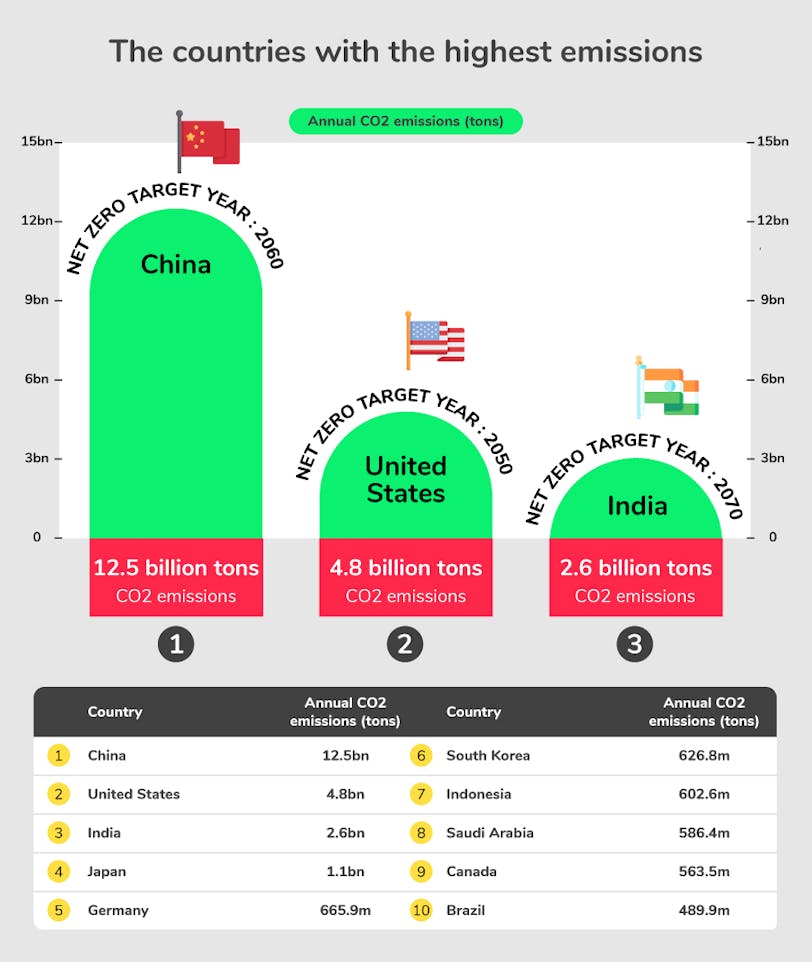
1. China | CO2 emissions: 12.5 billion tons | Net zero target year: 2060
The biggest CO2 producer in the world is China. In 2021 China produced approximately 12.5 billion tons of carbon dioxide, making an immense contribution to global pollution. Despite its high emissions levels, China will be one of the last countries on Earth to achieve net zero. China aims to be net zero by 2060, making it one of the last ten countries in the world to reach this goal if all targets are met.
2. United States | CO2 emissions: 4.8 billion tons | Net zero target year: 2050
The United States is at the forefront of CO2 production. The country emitted around 4.8 billion tons of CO2 in 2021, making it the world’s second-worst culprit in this area. Despite the high levels of carbon dioxide emissions, the United States aims to reach net zero emissions before countries including India and Saudi Arabia, where CO2 production is lower.
The US is one of over 100 countries to set the net zero target year of 2050, which is not officiated in US law, but written into official policy.
3. India | CO2 emissions: 2.6 billion tons | Net zero target year: 2070
The third largest producer of carbon dioxide emissions in the world is India, where around 2.6 billion tons of CO2 are released annually.
With one of the highest levels of annual carbon dioxide emissions, it’s no surprise that India is the last country expected to reach net zero, tied with Ghana.
Net zero companies
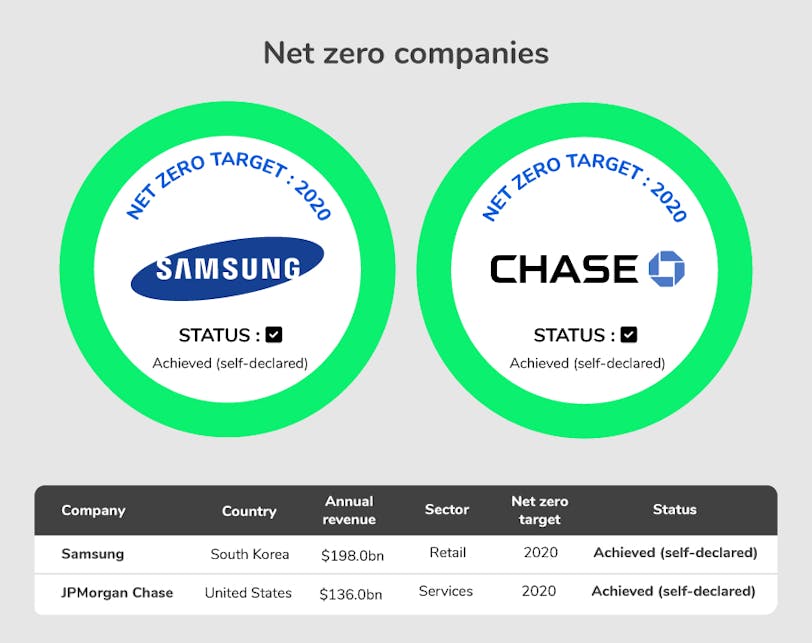
1. Samsung, JPMorgan Chase | Net zero target year: 2020 | Status: Achieved (self-declared)
Samsung Electronics achieved net zero direct emissions as a self-declared goal in 2020. According to company documents, the electronics giant continues to pursue net zero direct and indirect emissions, aiming to achieve this by 2050. With an annual revenue of $198 billion, Samsung is one of the largest companies in the world to commit to net zero emissions.
JPMorgan Chase is one of the largest banking companies in the world, with an annual revenue of $136 billion. The company achieved self-declared net zero emissions in 2020, although continues to work towards this goal.
The companies leading the race to net zero
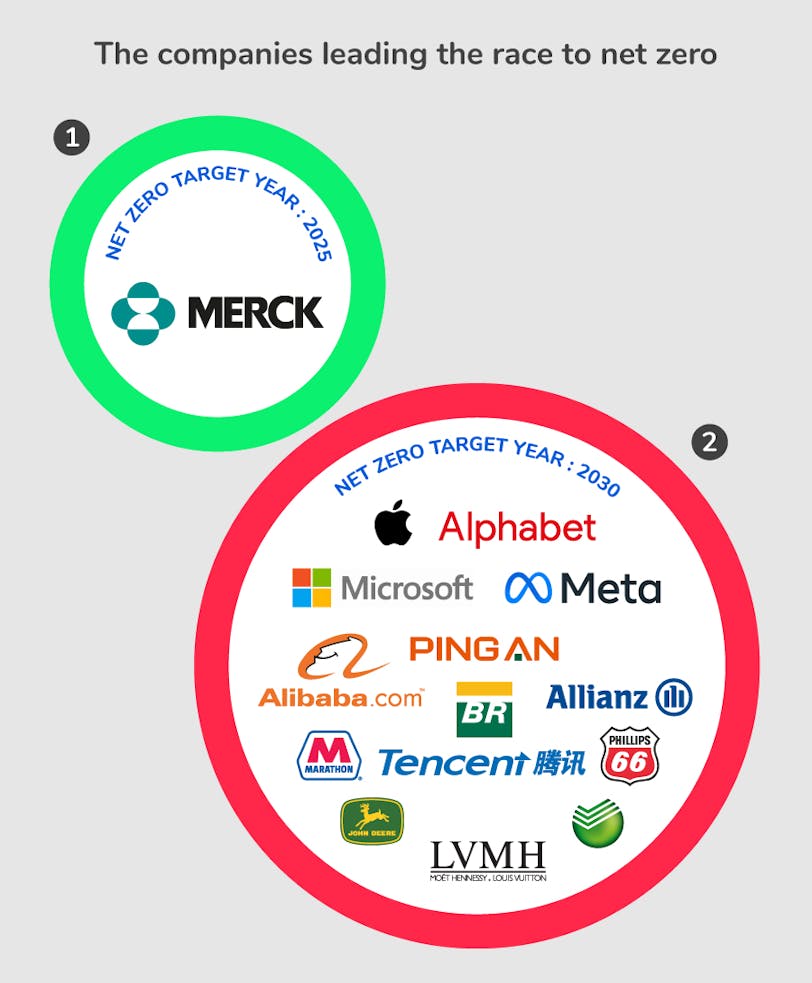
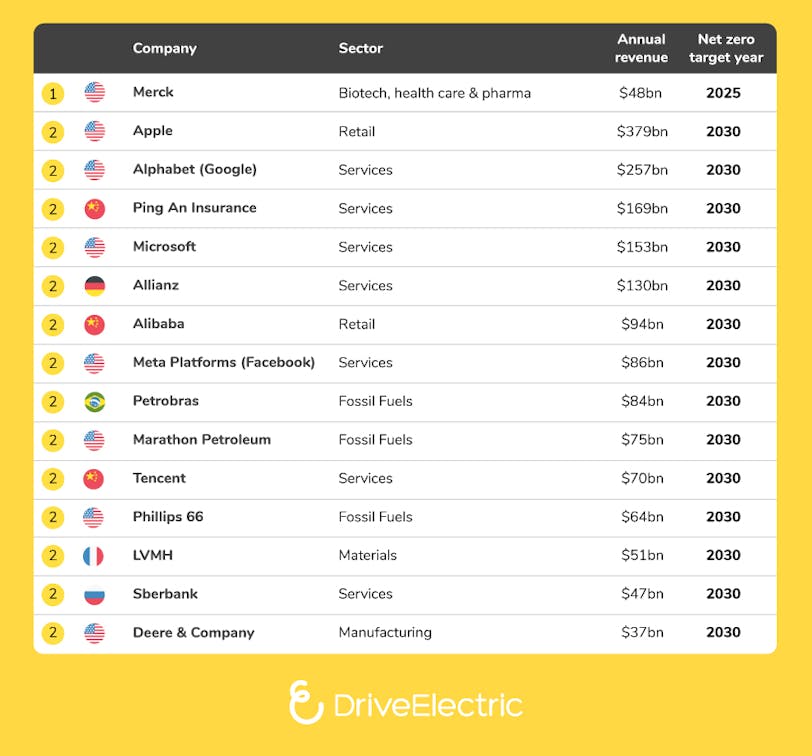
1. Merck | Net zero target year: 2025
Merck, the German science and technology company, is at the head of the race to net zero. Despite having a lower annual revenue than most companies on our list, the company is prioritising reaching zero emissions, aiming to achieve this in just two years.
2. Apple, Alphabet (Google), Microsoft, Meta Platforms (Facebook), Alibaba, Ping An Insurance, Allianz, Petrobras, Marathon Petroleum, Tencent, Phillips 66, LVMH, Sberbank, Deere & Company | Net zero target year: 2030
2030 is a popular target year for reaching net zero, shared by 14 companies on our list. Apple is the highest-earning company with this goal, making an annual revenue of around $379 billion, followed by Alphabet (Google) with an annual revenue of $257 billion.
Methodology
Countries:
- We wanted to reveal which countries are likely to become net zero first, so we sourced the net zero target year of each country and status from the Energy and Climate Intelligence Unit Net Zero Tracker on 8th June 2023.
- We sourced the GDP of each country from the World Bank on 8th June 2023.
- We sourced the CO2 emissions of each country in million tons from the European Commission EDGAR (Emissions Database for Global Atmospheric Research) CO2 emissions of all world countries, 2022 report.
- We removed any countries for which complete data was unavailable.
Companies:
- We also wanted to reveal which companies are leading the race to net zero. We sourced the top 100 companies in the world from Companies Market Cap on 8th June 2023.
- We sourced the net zero target, target status and annual revenue of each company from Net Zero Tracker on 8th June 2023.
- We removed any companies for which complete data was unavailable.